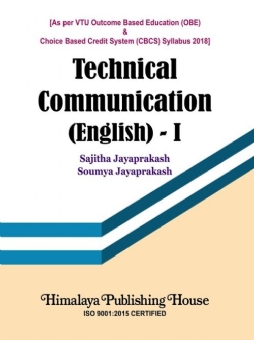Communication skills is a requirement for everyone. You need it in your personal life, school/college life, and professional life. No matter what profession you are in, communication skills give an extra edge. Communication skills can be improved by understanding the basic theoretical concepts, implementing them, and practicing them.
To be accepted in today’s competitive world, you need to be able to write well and speak well. You have to speak and write correct English, with clarity in expression. Unfortunately, communication is a practical subject. It is important to understand the concepts and theory. More importantly, able to practice it well.
In the last couple of years, there has been a sudden increase in the need for technical communicators (technical writers) in India. Many multinational companies having their development centers in India are setting up their documentation teams here. Though many organizations are ready to hire freshers and provide them with in-house training, it is often difficult to find someone who fits in to the profile well. This is due to lack of combination of the technical background and writing skills.
Contents of this Book –
Chapter 1: Introduction to Communication
This chapter discusses the following topics:
Communication : Information regarding the importance, the principles, the types and advantages of communication. It describes briefly the barriers to effective communication and also provides pointers to overcome those barriers.
Interpersonal skills : Introduces interpersonal skills and tells you how to improve your interpersonal skills.
Technical communication : Introduces one to technical communication and briefly explains the skills required for technical communication.
Chapter 2: Phonetics
This chapter contains the following topics:
Phonetics : Information regarding types of phonetics and International Phonetic Alphabet (IPA).
Sounds : It is about speech sounds, vowels, and consonants.
Pronunciation : Sounds mispronounced, silent letters, pronunciation of the word the, and words ending with –age and –able.
Chapter 3: Developing Phonetics and Vocabulary
This chapter contains the following topics:
Accent : Types and causes of word accent, rules for word accent, stress patterns, stress shift, importance of word stress, and word stress rules.
Question Tag : Question tag for assertive statements and negative statements.
One word substitute
Interrelationships of Words : Synonyms, antonyms, homophones, homonyms, homograph, heterography, polyseme, and capitonym.
Chapter 4: Speaking Skills
This chapter contains the following topics:
Syllable : Importance of syllables, ways to count them, and division rules. It also contains information regarding spoken and written syllables, and types of syllables.
Words : Word formation, types of word formations, word structure, strong and weak forms of words, word pairs, and words often misspelt.
Prefix and suffix : Categories of suffix.
Spelling Rules : Learn the various spelling rules.
Chapter 5: Public Speaking
This chapter contains the following topics:
Public Speaking : Public speaking process, types of public speech, Lasswell’s communication model, importance of public speaking, mastering public speaking
Extempore Speaking: Guidelines and some topics for practice
Difference between extempore and public speaking
English in India
Techniques for Neutralization of MTI (Mother Tongue Influence)
Listening Comprehension
Information Transfer
Oral Presentation : Preparing a presentation and structuring the oral presentation
Chapter 6: Grammar
This chapter contains the following topics:
Nouns : Types and examples of nouns
Pronouns
Adjectives
Verbs
Prepositions
Articles
Conjunctions
Articles







